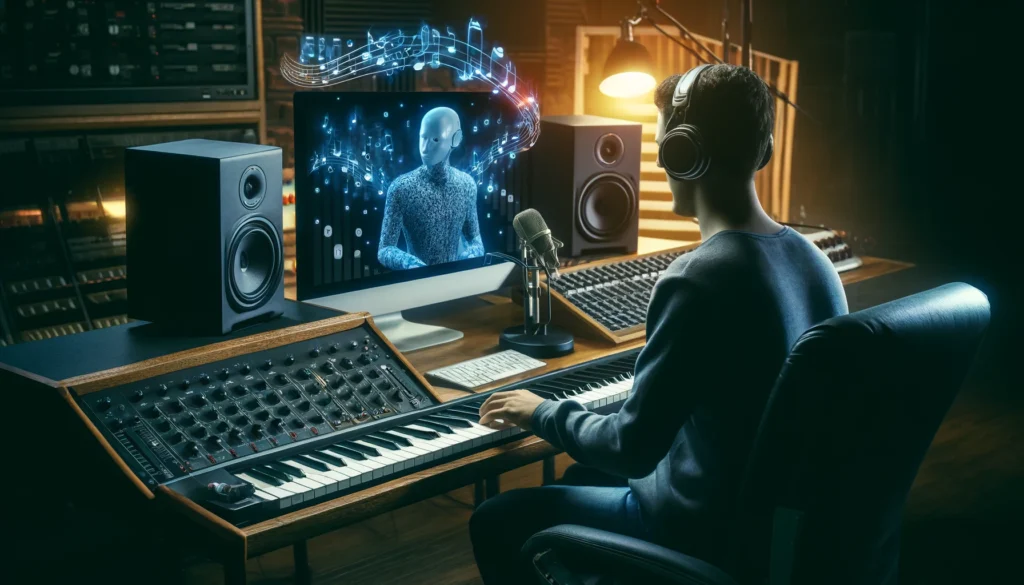Artificial Intelligence (AI) is making a significant impact on the arts and creativity, transforming how art is conceptualized and created. AI’s role in the creative industries highlights a shift in the understanding of art and creativity. Exploring AI’s creative capabilities broadens our view of its versatility and sparks fascinating questions about the nature of creativity.
AI as a Tool for Artistic Expression

Artists, musicians, and designers use AI to enhance their creative expression. Algorithms create new artworks by learning from extensive databases of classical and contemporary pieces. In music, AI composes original scores by analyzing patterns in a vast array of music, producing emotionally resonant yet entirely machine-generated compositions.
Examples of AI in Creativity
- Visual Arts: AI tools like DeepDream and DALL-E generate visually captivating artworks. These tools utilize neural networks trained on extensive image datasets to produce new visuals that range from surreal to unsettlingly strange. Learn more about AI in visual arts here.
- Music: AIVA (Artificial Intelligence Virtual Artist) composes music for films, ads, and games by analyzing scores to understand and apply music theory. Discover more about AI in music composition here.
- Literature and Writing: AI assists authors in crafting narratives and generating stories. AI tools suggest plot twists, develop characters, or compose poetry, forming a new type of creative partnership between human and machine.
- Performance Arts: In dance and theatre, AI systems create complex choreographies and control lighting and stage effects based on performers’ movements, enhancing the dynamic of live performances.

The Creative Process and AI
Incorporating AI into the creative process fosters a collaborative dynamic where humans and machines co-create. Artists provide emotional insight and creative direction, while AI processes and generates outputs from large datasets. This partnership pushes traditional artistic boundaries, creating new forms of expression.
Ethical and Philosophical Considerations
The rise of AI in creative domains brings controversy. Key ethical and philosophical questions include:
- Authenticity and Ownership: Who is the creator of AI-generated art? How do we assign credit when algorithms produce artwork?
- Originality and Creativity: Is AI truly creative, or does it mimic human creativity? Does using AI in art diminish the value of human creative input?
- Economic Impact: What is AI’s effect on artists’ livelihoods? Could AI-generated art flood the market and devalue human-created works?
Conclusion
AI’s integration into arts and creativity redefines our perceptions of machine potential and challenges traditional notions of creativity. As AI evolves, its role in creative sectors likely will inspire innovations that blur the lines between technology and art. This intersection redefines creativity’s possibilities and encourages us to embrace AI’s contributions to the diverse world of artistic expression. Like other sectors influenced by AI, the merging of creativity and technology not only expands art’s boundaries but also enriches our understanding of what it means to be creative.
Stay tuned for more explorations into how AI reshapes various sectors, deepening our understanding and sparking new creative potentials. Continue following our series on AI News here.



